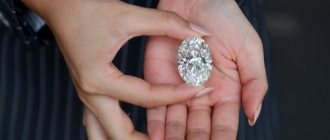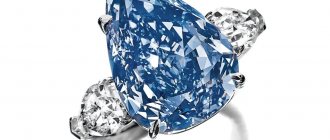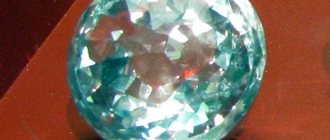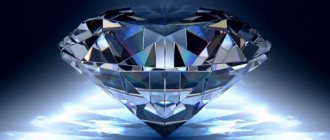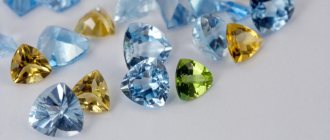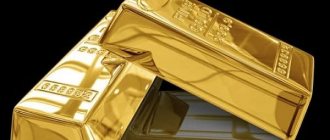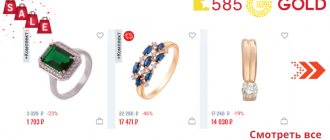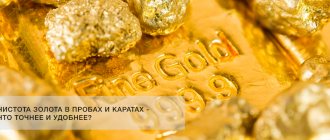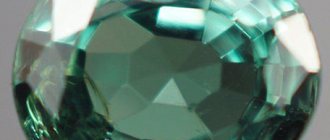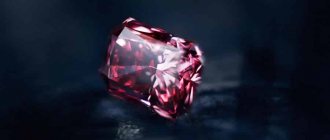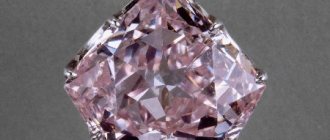Jewelers and keratonia
In ancient times, in order to estimate the weight of an object, it was compared using ordinary scales with a certain standard. In the case of precious stones, various seeds, as well as grains of rice, wheat, barley and other plants, have been used for this for a long time. But their size and weight are never the same... Therefore, the jewelers of Ancient Greece suggested using the seeds of the carob tree - keratonia (in some areas the tree is called carob). The smooth brown seeds always weigh the same. This is where the name of the weight unit “carat” comes from.
Keratonia grains not only serve as a standard for weighing diamonds, but also have many other beneficial properties
Only in 1907 did an international treaty establish the exact weight of a conventional carat. Before this, the Arab carat was equal to 0.223 g, and the ancient Roman carat was 0.189 g. Now the carat is exactly 0.2 g.
Naturally, the more a solid precious mineral weighs, the more expensive it is. When cutting it, part of the weight (sometimes significant) is lost, but after processing the stone always increases in price.
How to choose an emerald in jewelry
Jewelers often use noble yellow metal for the setting, which makes the products more luxurious and refined. Gold rings, earrings, bracelets, pendants and necklaces with green gems are suitable for a special occasion or for everyday wear.
Often many types of emeralds used in jewelry are actually other minerals. But due to their physical properties, they look and refract color differently; different cutting methods are used for them. Knowing these features will help you choose jewelry and not doubt the quality and naturalness of the stone.
- Natural specimens are processed with a four-stage cut, giving the shape of a square, circle or triangle. Such samples lack layering.
- A doublet or triplet can be identified by the presence of gluing lines. In this case, the junction and layers (2 or 3) are clearly visible in the light.
- Synthetic imitation is characterized by bright shine and transparency. If you lower the jewelry into water, red reflections will become visible on the surface. If in doubt, you can ask for a certificate - the seller is obliged to provide a document confirming the authenticity of the emerald.
- In a regular jewelry store it is almost impossible to purchase a large gem that turns out to be real. These are museum or auction exhibits. The large stones sold are most often glass fakes. You can take the sample in your hands - the glass will heat up faster than its natural counterpart.
Caring for emerald earrings, necklaces, rings and bracelets is easy. Main rules:
- clean with soap and water;
- avoid contact with cosmetics and perfumes;
- avoid prolonged exposure to bright sun rays;
- Store separately from other decorations.
When buying jewelry or a talisman with a precious mineral, it is important to choose a natural gem, which is famous for its magical powers and magical influence on a person’s life and destiny. Knowing the characteristics of natural samples and tips on recognizing a fake will help with this. Naturally mined emeralds are not cheap, but they are well worth the investment.
Important Features
In the ancient world, it was believed that there were only four types of gemstones:
- diamond;
- ruby;
- sapphire;
- emerald.
All other minerals were considered their varieties and were valued much less.
Diamond (translated from Arabic as “indestructible”) is the hardest substance on Earth, which is 100% carbon. But this is the substance on which all earthly life is based - so fragile and unstable to the slightest changes in temperature and pressure. It turns out that, under certain conditions, he is capable of creating such a powerful composition of the crystal lattice that centuries of searching for harder substances have led to nothing.
The search is doomed to failure even theoretically:
- atom size is too small;
- There are no crystal lattices equal in symmetry.
This provides unique hardness properties that no other material on Earth possesses:
- Diamond can exist unchanged for billions of years without reacting to pressure, temperature or radiation.
- Diamond cuts and scratches other substances and materials, not only relatively soft ones such as glass or iron, but even abrasive ones such as corundum or expensive special alloys for impact hammers and stone crushing machines.
- Its hardness is 10 (on the Mohs scale), and the hardness of other materials is calculated from it as a “ceiling”.
Despite two wars, one revolution and a blockade, the Hermitage has preserved glass with an inscription made on March 7, 1902 by the last Russian Empress Maria Feodorovna with her diamond ring. Casting a glance from the window of the music room at her crowned husband, she scrawled: “Nicky is looking at the hussars.” (Niki is the pet name of Nicholas II.)
However, a diamond can easily split from an impact (a large diamond often crumbles during cutting), and this is the only obstacle to the widespread use of such a unique substance, which has already been learned to be produced artificially.
In addition, the price of a stone depends on its quality:
- purity, transparency;
- shine;
- integrity (no chips or cracks);
- absence of foreign inclusions.
All gemstones are very hard (at least 80% of the hardness of a diamond), so it has always been quite easy to check if it is a fake. The price of the mineral also depends on the color - a stone of an unusual color costs much more. For example, a rare green tsavorite garnet is worth more than a classic green emerald. Although an ordinary garnet is considered a semi-precious stone.
Diamond prices, of course, vary depending on clarity and quality. It is not low even for low-quality samples, but on average the price of a diamond starts from 500–600 dollars (32.7–39.2 thousand rubles) per 1 carat.
"Girls' Best Friends"
You can’t argue with nature: there are rarer gems and, perhaps, more expensive ones. But a cut diamond cannot be compared with anything. The word "diamond" in many European languages means the adjective "delightful".
Previously, diamond was considered an exclusively masculine gemstone that served as decoration:
- rings of rulers;
- ceremonial symbols of royal and royal power;
- crown;
- shoe buckles;
- buttons;
- weapons;
- even horse harness.
Since the 19th century. A diamond becomes a valuable gift specifically for women. A significant role in this was played by the House of Rothschild, who owned the diamond business, as well as an advertising campaign according to which a diamond was one of the main external symbols of the status of a person of high birth.
However, the phrase itself: “Diamonds are a girl’s best friend” appeared several decades later. And it belongs to the legendary actress of the twentieth century. Marilyn Monroe.
In the film “Gentlemen Prefer Blondes,” Marilyn sings that these stones can not only improve a girl’s mood, but also light a fire of happiness in her eyes
A little later, another Queen of Hollywood, Elizabeth Taylor, continued the tradition. She became the owner of a rare and beautiful pear-shaped diamond, named after the famous actor couple - “Taylor-Barton”. The stone is a gift from her husband Richard Burton, purchased at an auction at the Cartier jewelry house for $1.1 million (71.8 million rubles). Jewelry with this stone has gone down in the world history of jewelry, and the actress herself is captured with it in many photos.
Elizabeth Taylor with the 69.42-carat Taylor-Barton Diamond
Over time, fashion trends change, but the popularity of precious jewelry is unshakable.
Tsavorite garnet
Tsavorite is a jewelry variety of grossular garnet. The typical color is green with a slightly yellowish tint. This is a relatively new stone on the international scene. It was discovered about 50 years ago in Tsavo National Park in Kenya. Nowadays it is also mined in Tanzania, less often in Madagascar. Since 1974, the jewelry company Tiffany&Co has been promoting the new gem to the market.
Today it can be seen in products of major jewelry brands. The weight of tsavorites rarely exceeds 3 carats. Larger specimens are typically deep green in color, caused by the presence of chromium and vanadium impurities. It is worth noting that tsavorite is one of the few precious stones that are not subject to any types of refining. The best 5-carat specimens can cost $5,000-$6,000 per carat.
Comparing stones by weight
Stones that combine:
- great rarity;
- beauty;
- interesting story;
- increased demand.
Such stones include, for example:
- blue eremeevit from Russia (Trans-Baikal region);
- blue garnets;
- black opals;
- a large number of stones, the names of which, due to their rarity, were given quite late - only in the 20th–21st centuries.
Some minerals are so rare that no more than ten specimens can be counted in the entire world. The cost of 1 carat of such stones reaches 30–50 thousand dollars (which is 2–3.3 million rubles). The price of rare jadeites, rubies and alexandrites from Russia is usually higher. And yet, the absolute leader in value is the rarest red diamond.
Only 1% of all mined diamonds have a red (fancy, as jewelers say) color
The bigger, the better
Precious stones are quite rare in nature, and most of them are quite small. Therefore, in those rare cases when it is possible to find large crystals, their price per 1 carat automatically increases compared to small specimens.
"Letseng"
The Letseng matte diamond costs, according to experts, 50–100 million dollars (32.6–65.3 billion rubles). Found in the small African kingdom of Lesotho, the stone weighs 910 carats, has a rare matte finish, and so far has the highest price in the world by unit value (of stones sold in pieces on the market).
Giant 910-carat diamond found in Lesotho
Emerald "Bahia"
The Bahia emerald costs from 250 to 925 million dollars (16.3–60.4 billion rubles). It is the fourth largest gemstone found on the planet; It is the largest of all emeralds. The crystal was mined in Brazil.
Attention! Total weight: 1.7 million carats. This incredible mineral was discovered in 2001 in Brazil, in the city of Bahia. Local miners were in no hurry to sell it, and for some time the stone gathered dust in the garage, covered with old rags. But information about such a “miracle” quickly spread throughout the country.
Criminals, businessmen, resellers and collectors began to hunt for the stone. The emerald moved from place to place, from one owner to another, but no one managed to turn it into real money. In 2008, the stone was confiscated by Los Angeles police. Until today, while the legal battle continues between candidates for ownership of the emerald, the stone rests in the Los Angeles Sheriff's Office.
Bahia is the world's largest emerald
"Guinness"
The classic green Guinness emerald, worth about 500 thousand dollars (32.6 billion rubles) and weighing 1,759 carats, was found in Colombia. It is owned by the mining company Fura Gems. The stone was honored to be included in the Guinness Book of Records for its weight and proven price. Now on display to the public at the National Bank of the country.
"Guinness" - a huge emerald of bright green color - is stored in the National Bank of Colombia
"Star of Adam"
“Star of Adam” is a blue sapphire worth, according to various estimates, from 100 to 300 million dollars (6.5–19.6 billion rubles). Found on the island of Sri Lanka, which since ancient times was famous for its deposits of precious stones. This sapphire, the largest ever found, weighs 1,404 carats. Sapphire has the optical property of forming a hexagonal “star” inside in bright light. The radiance and play of the stone is highly valued in all precious stones, but especially among sapphires.
"Star of Adam" - the largest sapphire in the world
GREEN GIANTS OF RUSSIA
Large emeralds are also found in Russia, in the Urals.
Ural competitors are only slightly inferior in quality to Colombians.
Malyshevsky emerald
An example of Ural emeralds is a stone found in 2018 at the Malyshevsky mine near Yekaterinburg. The net weight of the find is 1.6 kg, dimensions are 14x7 cm. In appearance, the stone resembles an almost regular hexagon.
A name was not invented for the mineral, but the value was immediately determined: appraisers named the amount at 4 million rubles. The workers who discovered it in a mine at a depth of 250 meters received 250 thousand rubles each.
Malyshevsky emerald
The rarest stones on Earth
Rarity is also an important characteristic on which the value of a gemstone depends. Thanks to this criterion alone, some pieces can cost a fortune.
Eremeevit
The rare mineral eremeevite, named after Pavel Eremeev (a Russian geologist), has a light blue color and was therefore previously considered a type of aquamarine. It is mined only in Transbaikalia; varieties of other colors of this stone have already been found, but classic blue is valued higher.
The color of eremeevite varies from yellow and brownish to blue. Blue stones are valued higher
Grandidierite
The rare mineral grandidierite, native to Sri Lanka and Madagascar, comes in different colors (from blue to green). No more than 20 specimens of such stones are known in the world. In terms of per carat, its value is estimated at more than 30 thousand dollars (more than 1.9 million rubles).
Grandidierite is the rarest stone on Earth, named after Alfred Grandidier, a scientist who studied Magascar
Padparadscha
Deposits of rare padparadscha sapphires, all in Sri Lanka, have already been exhausted. Now they have learned to synthesize such stones by heating a corundum mixture. Therefore, a natural sapphire of this type costs 20–30 thousand dollars (1.3–1.9 million rubles) per 1 carat.
Padparadscha is a unique red sapphire, not found anywhere in nature today.
Imperial
The green semi-precious stone jadeite, which in rare specimens resembles diamond, is much less common than non-precious jade, which is similar in origin and structure. A rare example is the imperial, an emerald green, translucent variety of jadeite that is worth more than a typical diamond from South Africa or Russia. In 2021, a monolith of jadeite with imperial inclusions was found in a mine in Burma. Thanks to them, the entire stone is worth 170 million dollars (11.1 billion rubles). But it’s not only the imperial that is valued. Ordinary high-quality transparent jadeite can also cost up to 20 thousand dollars (1.3 million rubles) per 1 carat.
A rare variety of green jadeite - imperial
Blue tourmaline
Rare blue tourmalines are found in eastern Brazil. This is a rare type of stone, the price of 1 carat of which is equal to the price of diamonds.
A rare variety of blue tourmaline
Alexandrite
The alexandrite stone was found and classified at the beginning of the 19th century. in the Russian Empire. A strange mineral changes color depending on the lighting. It was initially mistaken for an emerald due to its green-turquoise color, but it turned out to be much harder. The scientist, who examined the stone in daylight, was amazed in the evening - in the light of a candle, the stone shone with a red-violet color.
The find is named after the newborn heir to the throne of Russia (the future Emperor Alexander II). Soon deposits of these crystals were discovered in the Urals. Russia has become a monopolist in the export of alexandrites, which have become a legend among European jewelers thanks to:
- excellent combination of hardness required for cutting;
- amazing and changing colors.
Now 1 carat of alexandrite costs a little less than a carat of large and high-quality South African diamond.
Alexandrite, a color-changing gemstone, is highly prized in Europe
Ruby beryl
It is extremely rare to find ruby-colored beryls in the United States, which are called bixbites. So rare that their average cost is unclear; according to information from open sources, it reaches 10 thousand dollars (650 thousand rubles) per 1 carat.
Bixbite - ruby-colored beryl
Benitoites
Dark blue or gray benitoites from the USA are known from only one deposit in California. There are no more than 10 stones in the world.
Benitoite is one of the rarest minerals in the world, the price of which is increasing from year to year.
Poudretti
Pink powdertite is a mineral from Canada, from the mine of the Poudret family, which sells the stones at private auctions. Their price began to become clear only after similar examples were found in Burma. For 1 carat you have to pay about 4 thousand dollars (261 thousand rubles).
Rare pink powdertite from a mine in Canada
Garnet chameleon
Garnet is a widespread mineral that belongs to the group of gemstones of the second row, has a dark blue variety that can change its color when the light changes from blue to red. Having properties similar to Russian alexandrite (even rarer), it costs a little less.
A rare blue variety of garnet that changes color to dark red
Places of formation of precious gems
Diamonds are mined on all continents, but their deposits are not equal everywhere. They are located in areas where rock layers lie horizontally and are divided into types:
- primary, formed on magma;
- secondary, formed by placers, resulting from the destruction of deposits.
About 85% of diamonds are mined from deposits similar to a cone-shaped pipe called kimberlite or lamproite.
Famous stones
The most famous gems are so rare that most of them have no monetary value. Therefore, it is likely that they will never be sold.
"Kohinoor" ("Mountain of Light")
The largest diamond in the world, the Kohinoor, will adorn the crown of the British Empire. The stone, found in India, has long been the subject of strife among rajas and mysterious bloody stories. Came to Britain in the 19th century. Its weight today is 108.9 carats (after recutting by English jewelers). Naturally, it is pointless to discuss the market value of such a stone as long as Great Britain exists, since it is unlikely that it will decide to part with the relic.
"Kohinoor" - the main decoration of the royal crown of Britain
"Cullinan"-I ("Big Star of Africa")
The giant Cullinan Diamond adorns a faceted version of another symbol of Britain - the scepter of Edward VII. The once largest diamond ever found was cut into 105 pieces when cut; "Cullinan" is the largest of them.
The Cullinan in the scepter of Edward VII is the largest diamond weighing 530.2 carats.
"Great Mogul"
The largest diamond found in India, the “Great Mogul” diamond, was discovered in the legendary mines of Golconda in the 17th century. The original Venetian style cut (in the shape of a rose) was lost during recutting. Many jewelers question the existence of this miracle of nature and skillful human hands, although it has been documented.
This is what the “Great Mogul” would have looked like if he had survived to this day.
It is said that this particular diamond is now known under the name “Orlov”. The stone could have received its name after it was presented to Catherine II, since traces of the “Great Mogul” are lost, and “Orlov” is similar in characteristics to him and its origin is shrouded in a fog of mystery.
The Orlov diamond, so similar to the Great Mogul diamond, will give some idea of the incredible beauty of the stone
Musayifa red diamond
The stone, known as the Red Diamond Shield, is considered the world's largest red diamond. The crystal was found in Brazil in the 90s. XX century, has a triangular cut, the weight of the processed stone was only 5.11 carats. This specimen was first presented to the public in 2008 at the Smithsonian exhibition.
"Red Diamond Shield" - the world's largest red diamond
"Millennium"
A sapphire with a diameter of 28 cm from Madagascar called “Millennium” is known not only for its value, but also for its modern positioning:
- it belongs to the “commonwealth of owners”;
- rarely exhibited, despite the interest - at the Oscar ceremony in 2002, on cruise ships;
- but the most unique thing: the sapphire, generally speaking, is not very transparent, has the shape of a ball with carved portraits of historical figures - Michelangelo, Einstein, Shakespeare, etc.
Its stated price is $180 million, but the buyer, under the terms of the deal, must put the stone on public display.
Sapphire "Millennium" with carved portraits of famous personalities
"Shah"
“Shah” is a historical diamond, the first mention of which dates back to 1450. It was mined in Central India. This is an immaculately clean, transparent, yellowish-brown crystal weighing 88.7 carats, shaped like a sarcophagus. It has never been cut, only engravings are carved on it, and the surface is carefully polished. Now stored in the Diamond Fund of the Russian Federation.
The Shah Diamond is the payment of the Tehran Khan to the Russian Emperor Nicholas I for the murder of diplomat A. S. Griboedov in 1829.
Blue Diamond
The most expensive gemstone actually sold in recent decades is a blue diamond of rare clarity in a platinum setting weighing 8.08 carats. It was sold in 2021 at Christie's auction in New York for $18.3 million (at current exchange rates - 1.2 billion rubles).
The most expensive diamond sold at auction in Hong Kong
Padparadscha Sapphire
A stone with a beautiful and unusual name “ Pardparadscha sapphire ” - what is it? In general, jewelry sapphires are varieties of the mineral corundum. Their composition is aluminum oxide, Al2O3. In addition to the main blue color, sapphires have a very wide range of colors. Among them, the rarest Padparadscha sapphires stand out. Their color lies in delicate pinkish-orange tones. It is often compared to the color of the Sun at sunset or the color of lotus petals. The main color can be either orange or pink. Padparadscha sapphires have a Mohs hardness of 9.
There are three main known sources of these sapphires: Sri Lanka, Madagascar and Tanzania. Untreated specimens are most highly valued - without color enhancement by heat treatment. These are stones for true connoisseurs and collectors. The cost of an unheated 5-carat Padparadscha sapphire of good quality reaches $10,000-15,000/car., a heated stone is about 1.5 times cheaper. The record price per carat belongs to the Padparadscha sapphire weighing 14.65 carats, sold at Christie's auction in Hong Kong in 2011 for $775,000 ($53,000/carat).
